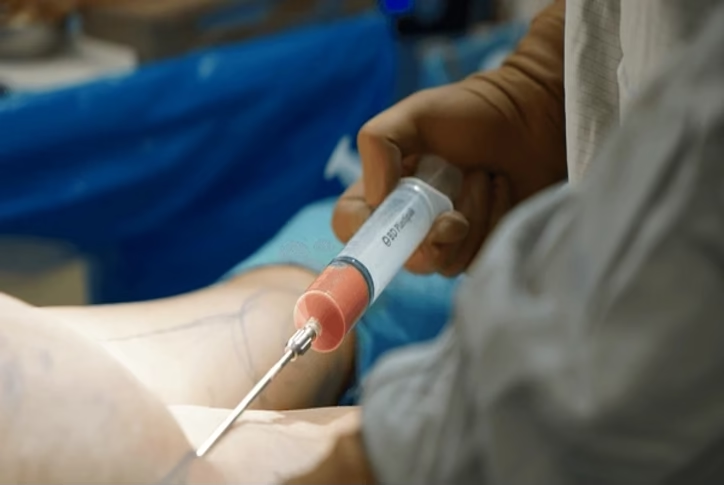Brazilian Butt Lift (BBL) is a procedure where fat is transferred—usually from the abdomen, flanks, or thighs—into the buttocks to create a fuller, more contoured shape. Over time, many patients wonder: “How will my BBL after 10 years look?” Will it hold its shape, or shift and fade? A BBL is not a one-time procedure; it’s a long-term investment, and how you care for it will determine how well it holds up.
Dr. Viral Desai, a leading expert in body contouring, explains, “While a BBL is designed for long-term results, the passage of time, weight fluctuations, and natural aging can alter the aesthetic outcome. Consistent care and healthy lifestyle choices can help maintain your results well into the future.”
Dr. Viral Desai is a renowned cosmetic and plastic surgeon in Mumbai, specializing in body contouring procedures like BBL. With years of experience and a deep understanding of fat grafting techniques, Dr. Desai has helped countless patients achieve their desired results while ensuring long-lasting satisfaction. His approach to BBL after 10 years focuses on providing realistic expectations and long-term maintenance advice, empowering patients to make informed decisions about their cosmetic journeys.
Wondering how your BBL will change over time? Let’s dive into the factors that shape your results as the years go by.
What to Expect After 10 Years

Let’s break it down:
- Some of the transferred fat integrates permanently, while other fat may be reabsorbed by the body over time.
- The overall shape may soften or settle slightly, especially under gravitational forces.
- Aging, weight fluctuations, hormonal shifts, and lifestyle factors (diet, exercise) will influence how the BBL looks.
- In some cases, slight sagging or volume loss may appear, especially at the lower buttocks or outer edges.
- Changes to the surrounding anatomy—hip fat, skin tone, muscle tone—can alter how the BBL looks visually on your frame.
Want to learn more about what to expect from your BBL over time? Connect with a professional to ensure you’re prepared for the years ahead.
Wondering why your BBL may change? Let’s explore the reasons behind these shifts and what they mean for your long-term results.
Why Your BBL May Change Over the Years
- Fat resorption: After transfer, a percentage of grafted fat may not survive. Over the years, some of what remains may continue to decrease.
- Weight gains/losses: Gaining weight can stretch the grafted fat, while losing weight may reduce it.
- Skin elasticity decline: As skin ages, its firmness declines, which can cause the buttocks to sag slightly.
- Gravity & mechanical stress: Daily wear and tear plays a role—posture, sitting habits, and sleeping positions can subtly affect shape.
- Hormonal changes: Especially with age, hormonal shifts can influence fat distribution in the body.
- Muscle atrophy or strengthening: Changes in gluteal muscle tone can alter how the grafted fat is supported and appears.
- External damage or trauma: Injuries, scars, or even surgeries in the area can impact tissue quality.
Because these factors vary between individuals, two people with identical BBLs may look different after 10 years.
How can you ensure your BBL lasts? Let’s discuss the key steps to maintain your results over the long term.
How to Maintain Your Results

- Maintain stable weight — large fluctuations are your worst enemy.
- Exercise smartly — focus on gluteal workouts (squats, lunges) but avoid excessive pounding if possible.
- Healthy diet & hydration — nourish your skin and tissues to preserve volume.
- Skin care & quality — firming creams, massage, laser therapy maintain skin elasticity.
- Avoid direct pressure in the early months — until full healing has occurred.
- Noninvasive touch‑ups — fat grafting top‑ups or fat stem cell therapy may help over time.
- Routine checkups — periodic imaging or evaluations with your specialist can help catch early changes.
Consistent self-care is your secret weapon to prolonging BBL results.
Could a revision be necessary after 10 years? Let’s explore when and why you might consider a touch-up.
Will I Need Revision Surgery for BBL After 10 Years?

In some cases, yes—but not always. Here’s what determines need:
- If volume loss is moderate and acceptable to you, you may skip revision.
- If asymmetry, sagging, or significant shrinkage makes the aesthetic outcome undesirable, a revision might help.
- Revision may involve secondary fat grafting (“top-up”), structural rearrangement, or skin tightening procedures.
- The safety and success of revisions depend on the quality of tissues left, vascular supply, and the surgeon’s skill.
- Because prior grafting may limit donor fat or create scar tissue, revisions are more delicate than the original BBL.
“Having an experienced professional perform revisions is key to achieving the best outcomes”, advises Dr. Viral Desai, an esteemed plastic and cosmetic surgeon in Mumbai.
If you’re concerned about needing a revision after several years, get in touch with an expert to assess your options
Conclusion
BBL after 10 years doesn’t necessarily vanish—but it often evolves. What remains is a blend of permanent grafted fat, changes from aging, weight shifts, and how well you’ve maintained your body. With the right habits and occasional touch-ups from seasoned experts like Dr. Viral Desai, many patients preserve pleasing results even a decade on.
Understanding your BBL’s potential changes over time is crucial to ensuring long-term satisfaction with the results.
Frequently Asked Questions
Is revision surgery safe after 10 years?
Yes, when done by an experienced surgeon—but the risks are higher due to scar tissue and altered anatomy.
Do I need to avoid sitting or lying on my back after BBL?
In the immediate months post-op, yes. After healing, normal sitting is permissible with moderation.
Will weight loss drastically ruin my BBL?
Significant weight loss can reduce the volume of even grafted fat; stability is crucial.
Does aging skin undermine BBL results?
Yes — decreased elasticity over time can allow sagging or shape loss.
Can noninvasive treatments help maintain BBL?
Yes — modalities like radiofrequency, massage, or skin tightening can support longevity.
Can a BBL go wrong over time?
Yes — issues like uneven fat resorption, asymmetry, or sagging can occur. This is often what people refer to as “BBL gone wrong.”
Is it too late to revise after 10 years?
Not necessarily — many surgeons successfully perform revisions even after a decade. You’ll just need customized planning.
Disclaimer: The information shared in this content is for educational purposes only and not for promotional use.


